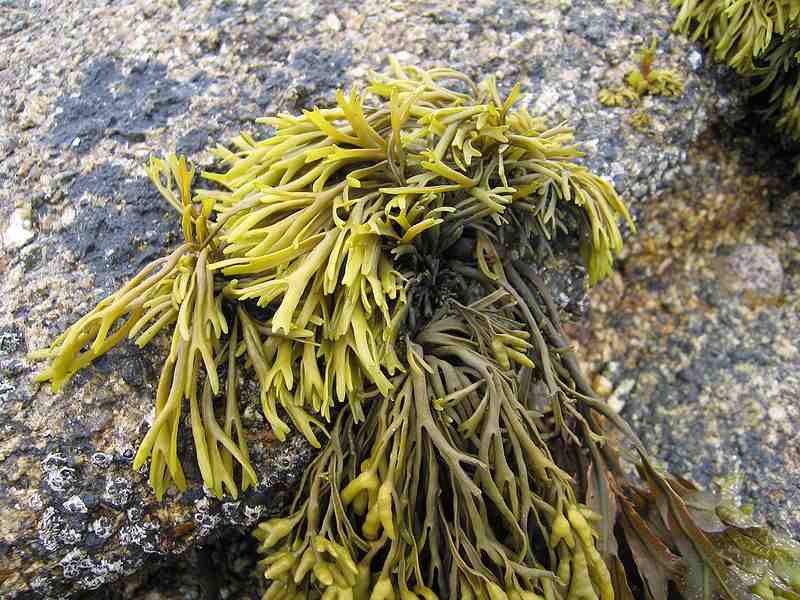Seaweeds are assigned to the Protista rather than the Plantae because even though they have plant like features they are algae and not a true vascular plant. They are neither plant nor animal. Seaweeds do not have roots, but they instead have whats called holdfasts. Holdfasts keep them on the sea floor. It is used as an anchor, but is not needed for water and nutrient uptake. Holdfasts are made up of things called haptera, which are fingerlike projections. The stipe is the stem of the seaweed, which supports the rest of the plant. The structure can vary from stiff, solid, very long, etc. The blades of seaweed are the leaves of it. The blades provide a large surface for the absorption of sunlight. Some seaweeds only have one, but others have many. There are a lot of seaweeds that have floats, which helps to keep the photosynthetic structure of seaweed " buoyant." The word thallus refers to the whole plant. The most important ecological role filled by seaweed is as a food source for marine animals like sea urchins and fish. Seaweed also provides shelter and home for fish, birds, etc. Large groups of seaweed form "kelp forests."

Kelp Forest
Some environmental types of stress seaweeds encounter are mechanical stress, and stresses that have to do with exposure to air and weather conditions. Mechanical stress is a result of constant motion of the ocean water . Seaweed can reproduce sexually by the joining of specialized male and female reproductive cells, which are caller gametes. They can also reproduce asexually. They do this by a process called fragmentation or division, which is when parts of the plant break off and and develop into new plants. Seaweed are classified into three groups. One of those groups are green algae ( Chlorophyta). Another is brown algae (Phaeophyta), and the third group is red algae( Rhodophyta). They are put into these groups based on their color and pigment. Some other features that are used to clqssify algae are cell wall composition, reproductive characteristics, and chemical nature. Further classifications are based on shape, structure, and form. Human benefits are that it is full of vitamins, minerals, fibers, and is tasty. Seaweeds can contain anti-inflammitories and anti-microbial agents, and seaweeds of sorts contain canger-fighting agents. Seaweeds also contribute to economic growth. They are in things like toothpaste.
Examples of New England Seaweeds
“Red seaweed Chondrus crispus, photo from New England Hiker”
“Head Dump, photo from Panoramio”
" Cystoseira tamariscifolia (Stackhouse) Papenfuss""Brown seaweed, photo from The Seaweed Site”
Photosynthesis of Seaweed
In the lab done in class we explored the rate of photosynthesis. Photosynthesis is the process in which plants take carbon dioxide from the atmosphere, add water, and use the energy of sunlight to produce sugar. The chemical equation is 6CO2 + 6H2O ------> C6H12O6 + 6O2 where CO2 = carbon dioxide , H2O = water, Light energy is required, C6H12O6 = glucose, and O2 = oxygen.

For this lab each set up relies on counting the oxygen produced during the reaction. Baking soda was added to the tat tube to improve results. We cut the stems and put the plant into the beaker. The water in the beaker was meant to absorb the heat from sunlight. Variables that effect the experiment are temp. of water, amount of baking soda, whether the stem was up or down, etc. My hypothesis is that design two will work the best because the air pockets can be well seen. After experimenting, I found that in fact this is a good way to test the rate of photosynthesis. Phenol red is used as an indicator for a base. With extra carbon dioxide the solution turns acidic and the red turns yellow, but when carbon dioxide is removed the solution turns back to red.





No comments:
Post a Comment